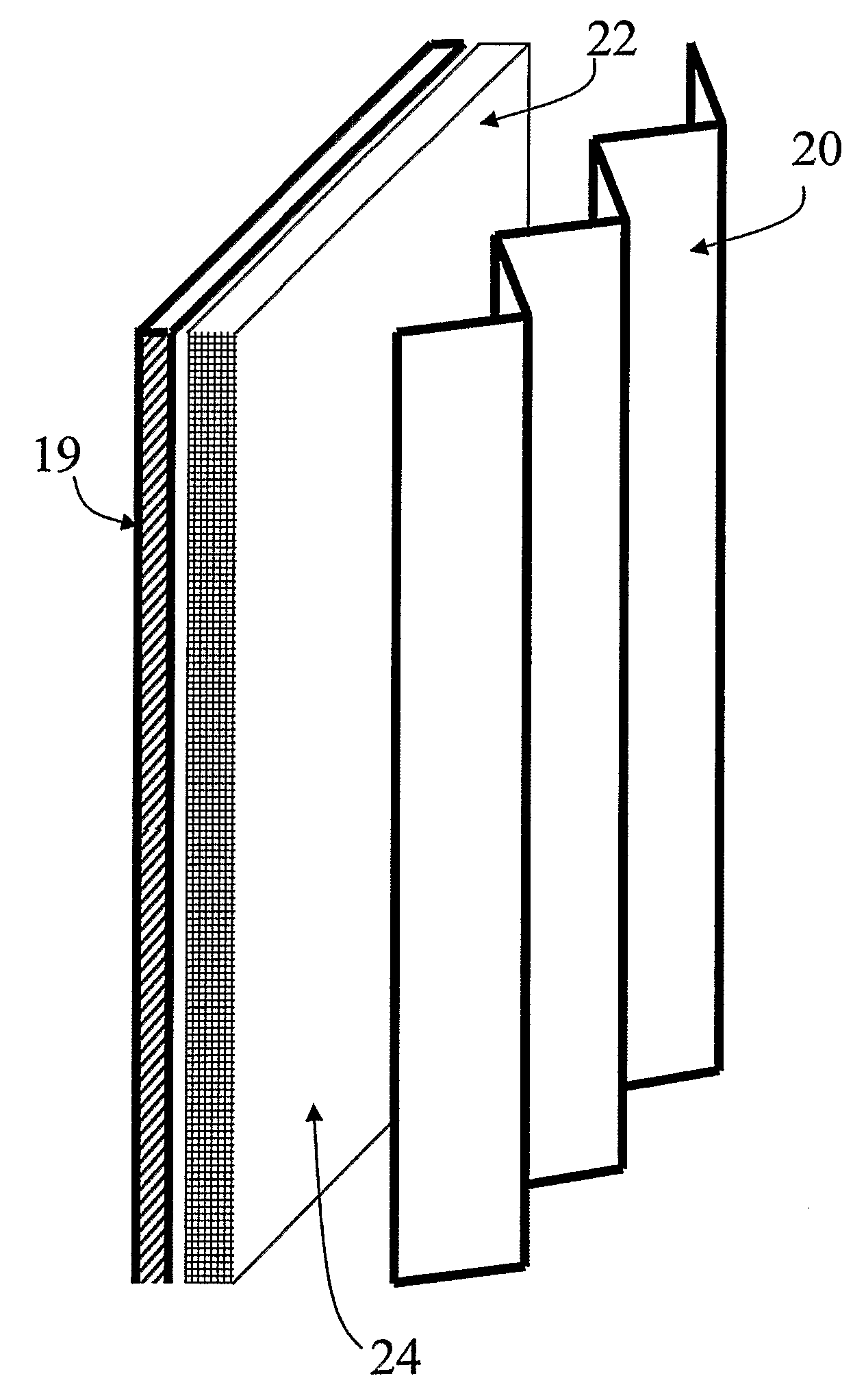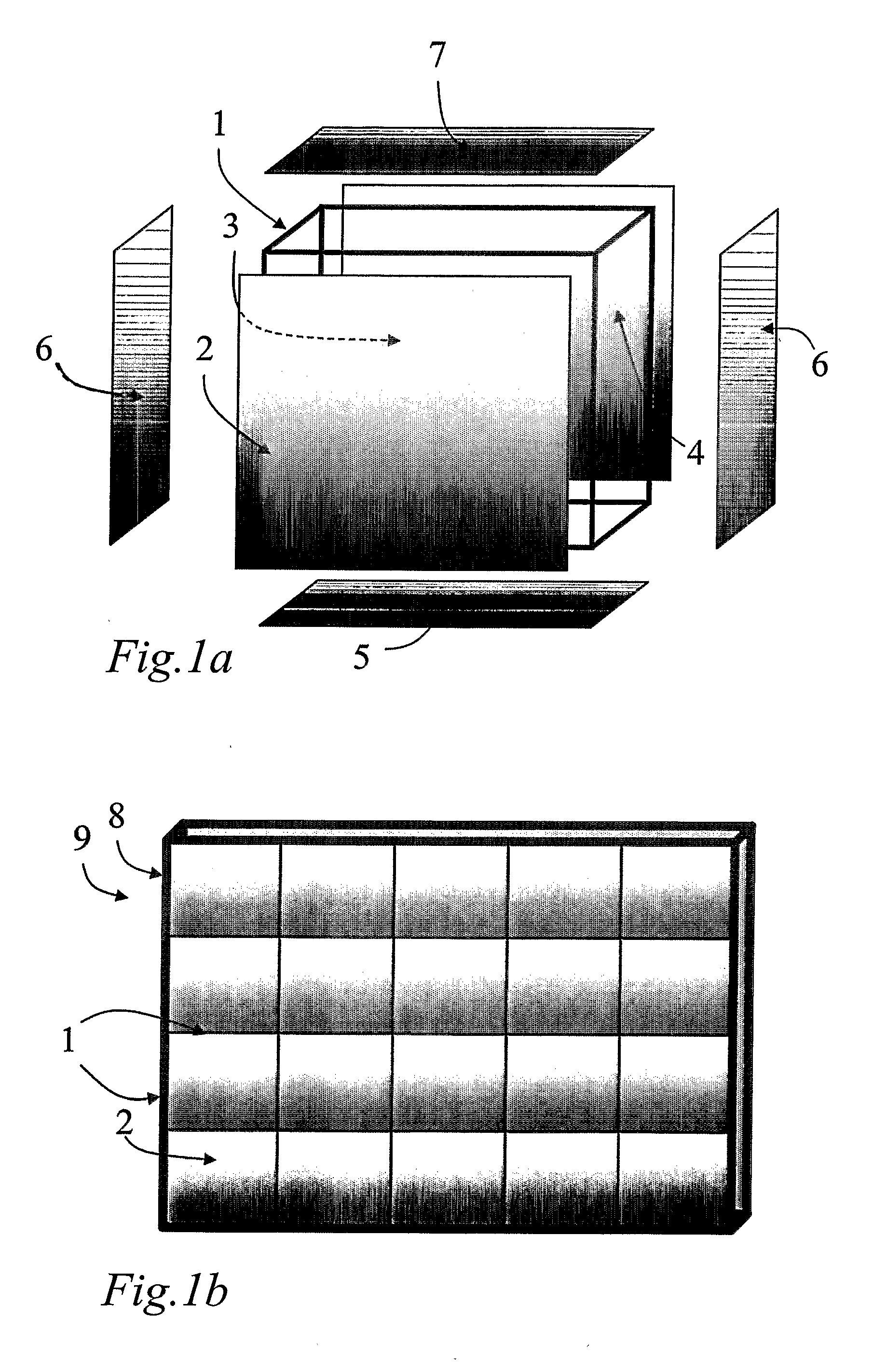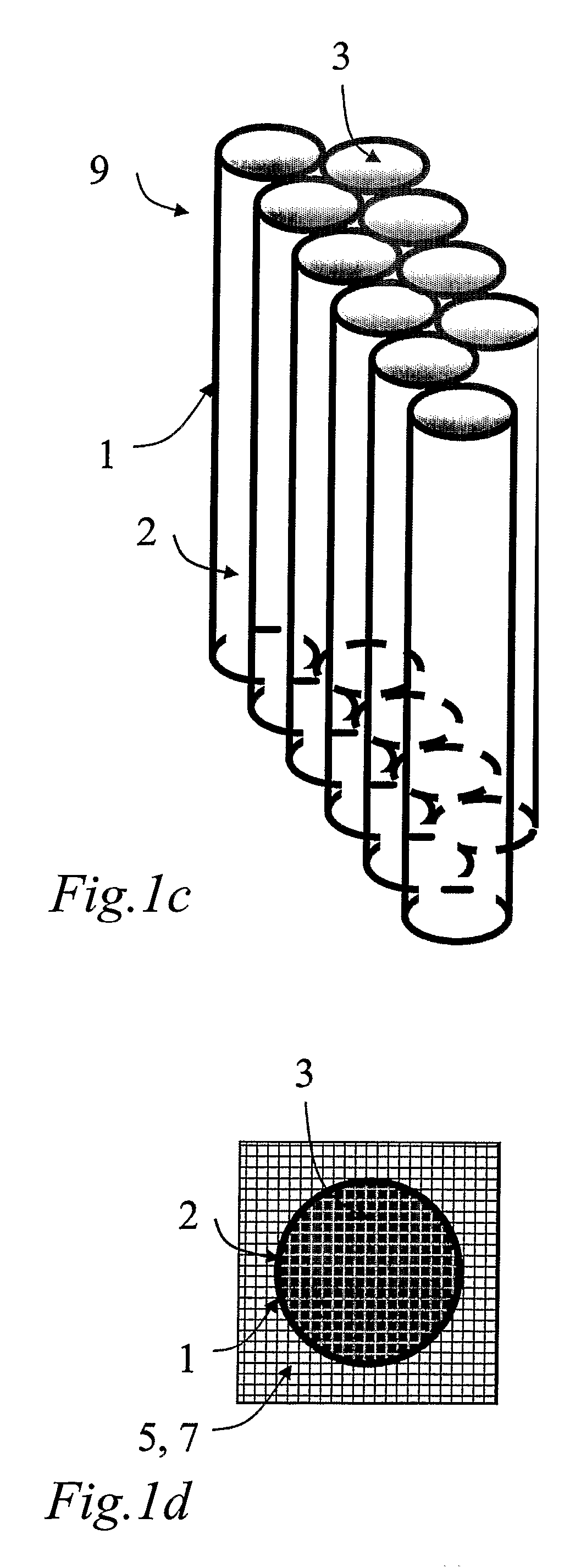Light Ballistic Protection As Building Elements
a technology of building elements and ballistic protection, applied in the direction of protective equipment, weapons, armour, etc., can solve the problems of not protecting against projectiles with a hard core, armor-breaking ammunition, soldiers and civilians being injured, etc., to facilitate mutual movement and maximize the energy dissipation of objects or their fragments
- Summary
- Abstract
- Description
- Claims
- Application Information
AI Technical Summary
Benefits of technology
Problems solved by technology
Method used
Image
Examples
Embodiment Construction
[0062] It has long been a desire to be able to design a ballistic protection against scatter, ricochets and other projectiles, which at the same time is easy to handle with a reasonable weight. Consequently, the main task of the invention is to design a robust deaccelerating protection for nonjacket, jacket and full jacket projectiles alternatively tracer projectiles and hand grenades that, by its comparably low mass, is easy to assemble or move if so required.
[0063] According to the invention the design is characterized in that the ballistic protection can be shaped in accordance with FIG. 1a as a sub-element with a frame 1 that carries a front panel 2 through which the projectile passes, and at least an intermediate layer 3 which together with the front panel forces the projectile to deaccelerate, and a rear panel 4 that finally stops the projectile. The other panels are the bottom panel 5, two side panels 6 and an upper panel 7, which are designed in such a way that the protecti...
PUM
 Login to View More
Login to View More Abstract
Description
Claims
Application Information
 Login to View More
Login to View More - R&D
- Intellectual Property
- Life Sciences
- Materials
- Tech Scout
- Unparalleled Data Quality
- Higher Quality Content
- 60% Fewer Hallucinations
Browse by: Latest US Patents, China's latest patents, Technical Efficacy Thesaurus, Application Domain, Technology Topic, Popular Technical Reports.
© 2025 PatSnap. All rights reserved.Legal|Privacy policy|Modern Slavery Act Transparency Statement|Sitemap|About US| Contact US: help@patsnap.com



